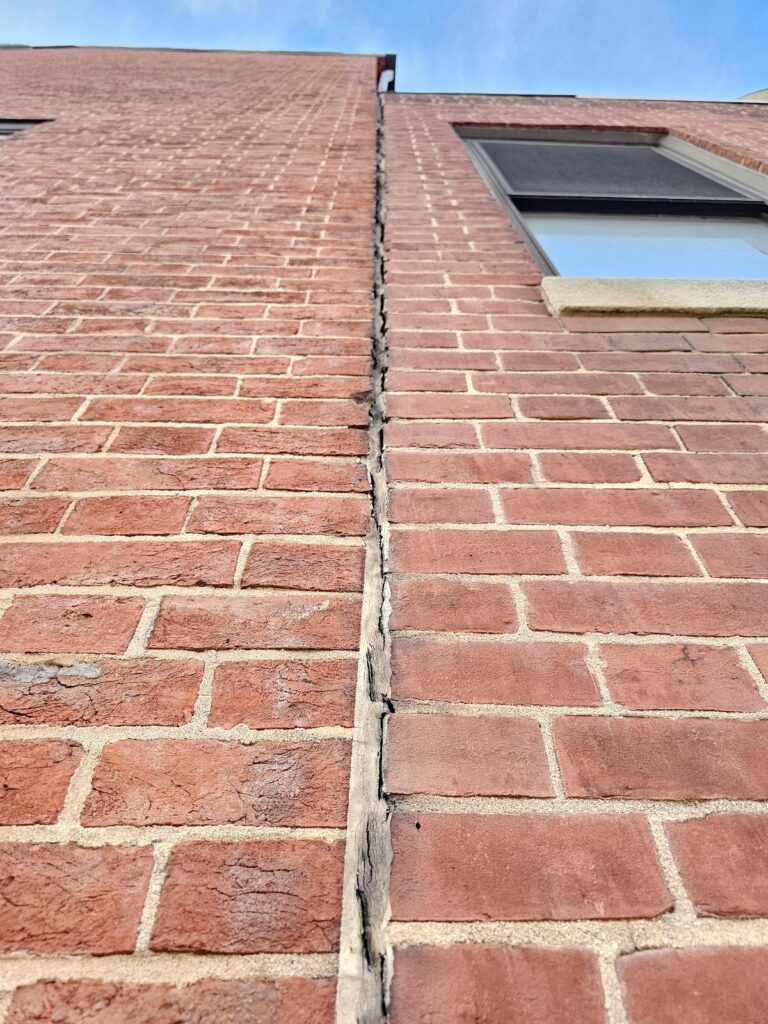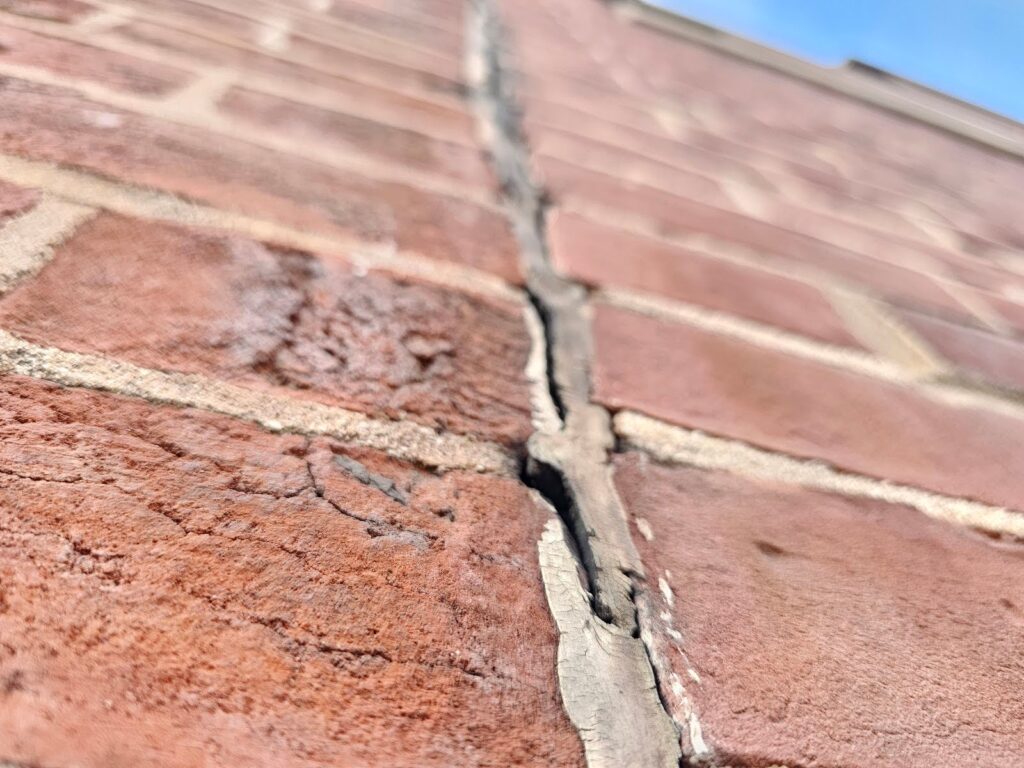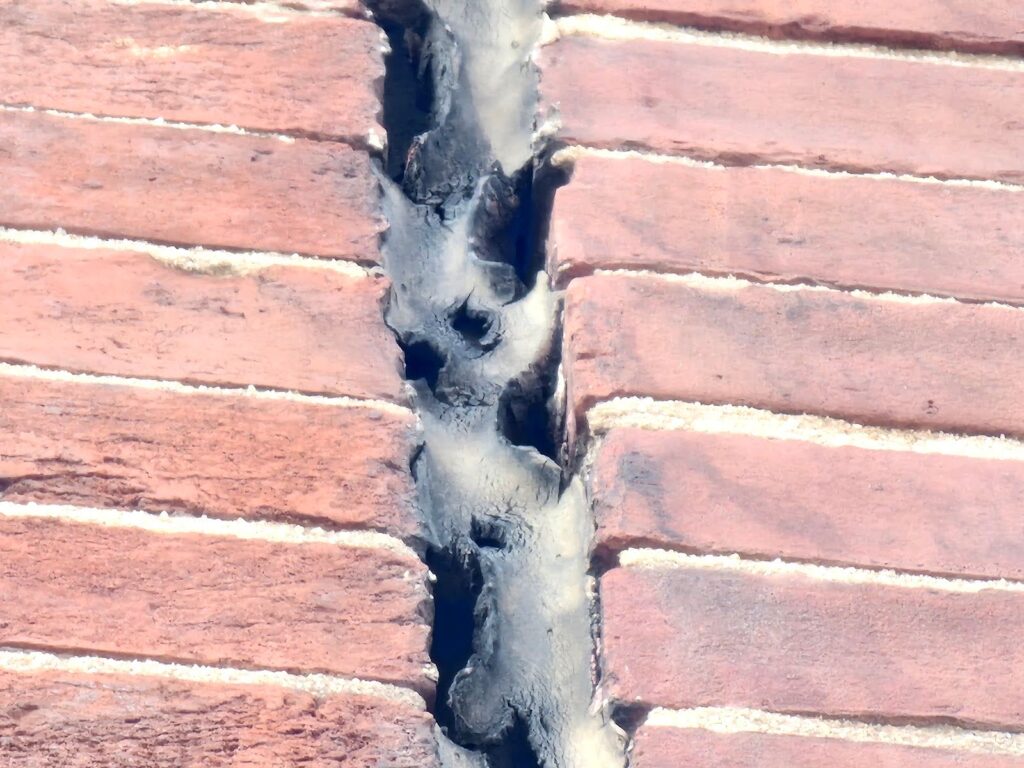Cold Joint Failures: Critical Warning Signs Every Property Owner Should Know
Here on our website, and here on our blog, we’ve talked about a wide range of different types of historic brick masonry building problems and defects. We look at all these different details as a way of building a body of knowledge around historic masonry restoration. We also happen to find that the engagement with our customers and client base helps build a community around discipline and focus of our business. Today, we’re looking at an issue that we’ve touched on in the past but we’ve taken some interesting photos and we’ll explore some of the facets of the building science elements behind the topic of cold joints in adjacent building construction.
The picture below shows a vertical joint between two different buildings or parts of the same building that were built at different times. Essentially, the building on the left hand side of the photograph below was built at least a few years prior to the building on the right.

We refer to this as a cold joint, as a way of distinguishing or disambiguating this type of joint between a joint that is set into a building with a tooth-in type of process. And in both of these two different scenarios, both buildings are built at different times. In a cold joint like this though, the buildings are essentially abutted next to each other.
The first building is built with a corner at a right angle and the adjacent building is built with the ends of each row or course of bricks built or set against the adjacent building. In many cases a small recess will be left so that it can be intentionally filled with an elastomeric sealant, in modern or contemporary methodology.
Most of the buildings that we’re looking at here though in our area of Washington DC are actually historic buildings. In cases where there is a cold joint like this, there are a few different types of concerns. First, even if a cold joint is filled with mortar, because the two different buildings are monolithic in nature, in the way they respond or move in their response to subgrade movement and or thermal or vapor affected movement, there will generally be differences that lead to separation.

There are also wide range different materials that can be used to fill this type of joint. We mentioned above that in some cases, The joint will be set without much space and and other cases, even when there is a bit of space it will be built similarly but the joint will be filled with a type of brick mortar. Here though, the void has been filled with a flexible sealant. Flexible sealants are a very practical type of solution, in many circumstances like this but there are also some shortcomings to sealants. First, there are several different types and several different associated levels of quality and durability.
Silicone sealants are relatively common and in some cases function pretty well to create a moisture barrier. Over time though, silicone materials will often break or have problems with adhesion to the substrate.
Acrylic type materials start out very flexible and forgiving in the application process but will often deteriorate relatively quickly when exposed to ultraviolet rays, which is common at the exterior of buildings. Elastomeric sealants are also available with a couple different types of component derivations, and in some cases work very well both from a perspective of adhesion and moisture resistance.
One of the most important characteristics, in this type of application, of these type of sealants though is their ability to maintain flexibility. Over time, with exposure to both heat cycles and ultraviolet rays from sunlight, many different types of sealants can deteriorate and lose their flexibility. Often after some time with exterior exposure they will become brittle and fall apart. Here, in this example, the building has moved from a type of differential settlement.

In this coming week, we’ll look at other pictures of different areas of this particular joint and we’ll talk more about differential settlement and its effect on the upper portions of buildings. Issues of differential settlement start at the lower part of the building, but as you can see here also have major effects on the entirety of the upper portions of the building as well.
Our company, Dupont Tuckpointing and Masonry, specializes in masonry restoration, historic brick repointing, and tuckpointing services in the Washington D.C. area. These buildings are uniquely historic, and their preservation requires skilled masons who are technically trained in the best practices and knowledge of proper restoration techniques.
We understand the significance of maintaining the architectural integrity of these historic structures, and our team of experienced professionals is dedicated to delivering exceptional craftsmanship. Whether you require masonry restoration, tuckpointing, or brick repointing services, we are here to help.
At Dupont Tuckpointing and Masonry, we take pride in our work and strive to ensure that every project is executed with the utmost care and attention to detail. We are committed to preserving the rich heritage of Washington D.C.’s built environment for generations to come.
If you have any questions or needs regarding masonry restoration, historic brick repointing, or tuckpointing services, please do not hesitate to reach out to us. We would be delighted to assist you and provide you with the expertise and quality workmanship that your historic property deserves.
You can reach us by telephone at (202) 796-7644 and you can reach us by email from the contact form on our website at https://duponttuckpointingmasonrydc.com/contact-us/.




